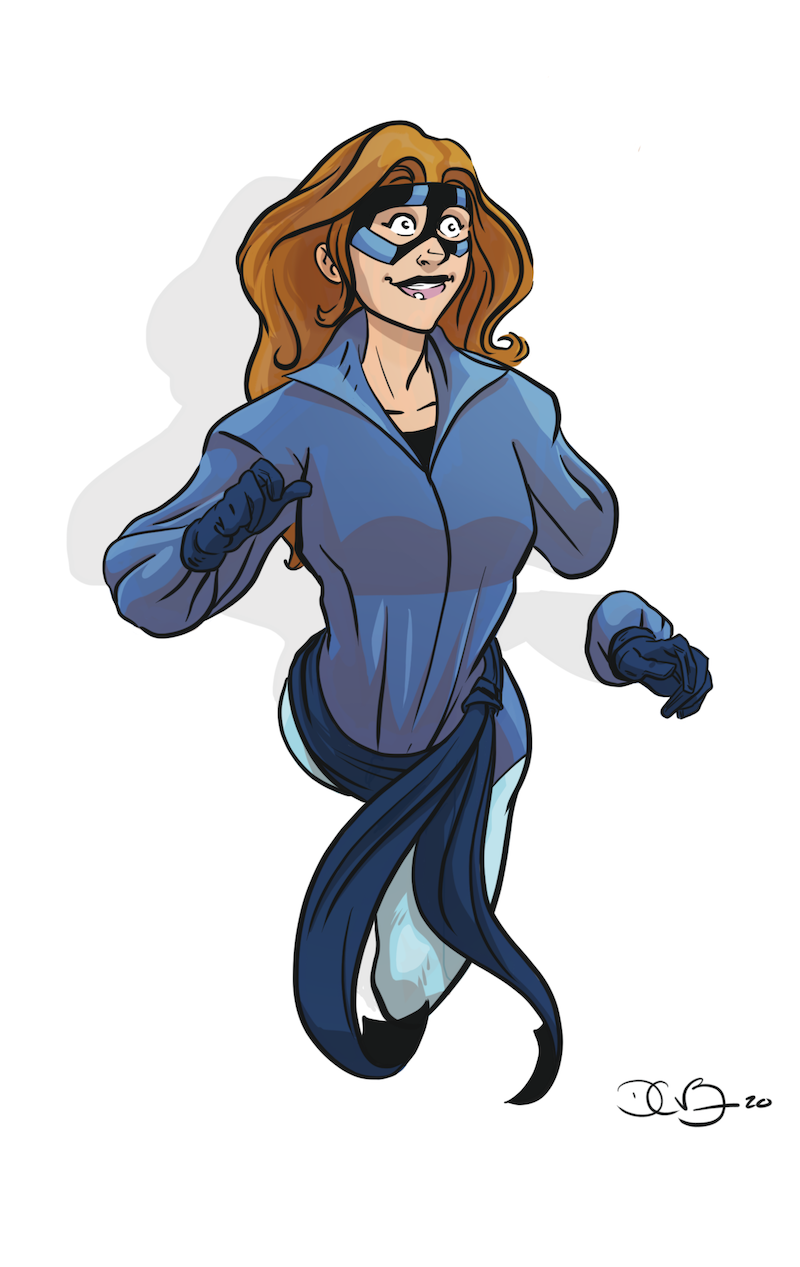Sketch Fridays #73 – Shadowcat

What makes drawing so difficult is that it’s meant to create a sense of three-dimensional objects on a two-dimensional plane. This is obviously easiest to do with photography or film, but drawing/art is the oldest way people have been making this happen and, even as someone who is marginally good at it, it is hard to do.
A paper’s illusory space breeds fantasy; while photography or film (without any post-processing) merely captures what is in front of the lens and is, thus, bound by the laws of physics in many ways, artists visualize things that can’t exist through their hands alone––just pencil on paper.

This fluid reality of an artist’s canvas fostered the creation of superheroes, people who are able to fly free from accoutrements or can fire lasers from their pupils or who can turn into beasts at will or can blast the power of the sun from their hands without being harmed.
Superpowers are impossible, but art can let us see them. Art realizes the unreal. More than that, artists can make these powers believable, even if not much attention is given to pseudo-scientific explanations or biological diagrams. We can see the hair blown back by Superman’s speed or the debris fly and crack from the Hulk’s fists impacting the ground. Artists play in this fantasy because it’s fun, but it’s also a challenge.
Again, drawing is hard. But you can learn so much by attempting to visualize the impossible, make it believable, and imbue it––solely through lines on paper––with a life that doesn’t exist.
Drawing this X-Men character, Kitty Pryde in her “Shadowcat” uniform, was a unique challenge because her powers directly interact with the liminal space between 2D and 3D. For her powers to be convincing, the artist must be able to sell the idea that you’re looking at a person exactly because the viewer is staring at a flat piece of paper.
Kitty’s power is called “phasing,” which means she can walk through walls, basically. Again, it’s a nonsense power, but when you think of comics as drawings, you can easily imagine how she was created––driven by the challenge and fun of drawing a person walking halfway through a solid wall. This is because, just like drawing in general, it makes the artist ask questions––in this case, they have to ask a lot of questions. How far forward are here hands from her elbows? Her knee from her torso? How far is she twisting her body in this jogging pose? How far back is her hair from her shoulders? All of these questions are framed against the question that makes it extra hard: where (on this flat piece of paper) is the wall?

It’s a fun challenge because the results are rewarding. Even if something is off or a bit weird, it was fun to solve problems and, in the end, creating something that looks like a magic trick.
The original sketch for this drawing was done for friend-of-the-comic, Tony Asaro. I was so pleased with the final product that I wanted to take it to color, which ended up being a lot of fun to use as practice.

Discussion (2) ¬